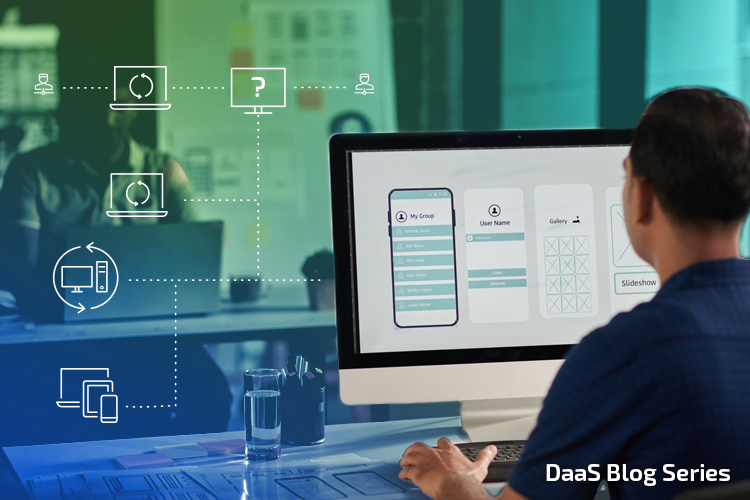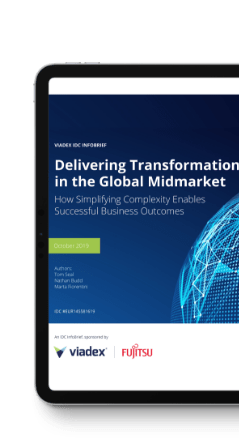Enhancing User Experience: The Ripple Effect of Device Lifecycle Management in a Global Business Landscape

In today’s interconnected world, many businesses operate across a geo-dispersed footprint in both locations and time zones. The obvious challenges underscore the critical importance of the ability to create seamless user experiences. The impact of a device’s lifecycle on user experience and overall productivity is profound. The complexities faced by global businesses in maintaining optimal user experiences, the potential pain points in device lifecycle management, and the strategic solutions that can transform user experience into a competitive advantage are outline below.
Pain Points: The Global User Experience Challenge
- Impact of Downtime: With teams spread across the globe, a device’s downtime can have cascading effects. Downtime in one region can impede work across time zones, leading to delayed project completion, missed deadlines, and hampered collaboration.
- Slow Response Times: Slow device performance can hinder productivity and frustrate users. Whether it’s accessing critical applications or communicating with colleagues, delays due to slow devices can accumulate into significant time losses over a device’s lifecycle, whilst also impacting the user and their ability to meet deadlines and deliver as part of a team.
- Erratic Support: Providing consistent support across different locations and time zones can be challenging, further compounded when users have different language support requirements. Users might face delays in receiving technical assistance, leading to prolonged device issues and disruptions.
The consequences of devices that are not functioning optimally are far-reaching – we call this the productivity paradox. Lost productivity is perhaps the most tangible outcome. When devices are slow, unresponsive, or unreliable, tasks take longer to complete, affecting efficiency. Furthermore, communication breakdowns caused by device issues hinder collaboration, leading to misunderstandings and diminished team cohesion. The individuals involved have heightened frustration and statistics show us that in some cases results in staff churn.
The domino effect of lost productivity also extends to customer interactions. Slow response times due to device issues can negatively impact the customer experience with a break in the customer journey, eroding trust and damaging brand reputation. Thus, a device’s lifecycle directly influences the overall health and success of the business.
Elevating User Experience through Managed Lifecycles
- Customized Device Provisioning: Tailor devices to user needs. Different levels of usage intensity require corresponding hardware specifications. Understanding user requirements helps ensure the right device for the job.
- Remote Monitoring and Management: Employ remote management tools to monitor device health and performance in real-time. This proactive approach allows IT teams to address issues before they disrupt users.
- 24/7 Global Support: Partner with IT service providers capable of offering round-the-clock multi-lingual support across different regions. A global support network ensures timely assistance regardless of time zones.
- Predictive Maintenance: Leverage data analytics to predict device failures. By identifying potential issues before they occur, businesses can prevent downtime and productivity losses.
- Proactive Upgrades: Implement planned device upgrades at suitable times to minimize disruptions. Regularly scheduled upgrades ensure devices remain up-to-date and capable of handling evolving tasks.
- User Empowerment: Provide training to users to optimize device usage. Educated users are more likely to make efficient use of devices and tools, enhancing overall productivity.
When devices are managed comprehensively throughout their lifecycle, users experience a renewed sense of confidence in their workspace and the company. Reliable devices foster a sense of trust and efficiency, enabling employees to focus on their tasks without the distraction of technical issues.
This confidence extends to interactions with clients and partners, as users can communicate and collaborate seamlessly. Efficient devices enable the consistent delivery of high-quality services and products, enhancing the company’s reputation.
In a business landscape, where locations and time zones are no longer barriers, the impact of a device’s lifecycle on user experience cannot be underestimated. The pains of downtime, slow response times, and erratic support reverberate through productivity losses and tarnished brand perception. However, by adopting strategic solutions that prioritize user needs and streamline device management, businesses can transcend these challenges. An optimized device lifecycle not only bolsters user satisfaction but also empowers teams to work cohesively, delivering superior results that set the company apart in a competitive world.




